RQA Indicator Spotlight: Interest Rate expectations
In our latest analysis, we delve into the realm of interest rate expectations, particularly focusing on how the Federal Reserve (“Fed”) manages short-term rates through the Federal Funds Rate. The Federal Funds Rate, set by the Fed, is the interest rate at which banks lend to each other overnight. By adjusting this rate, the Fed influences the cost of borrowing money, which in turn affects overall economic activity. When the Fed alters the Federal Funds Rate, it not only impacts short-term interest rates but also indirectly influences longer-term rates, as these are often set in anticipation of future Fed policies. This cascading effect ensures that changes in the Federal Funds Rate resonate across the entire spectrum of interest rates, from short-term loans to long-term bond yields.
At the last Federal Open Market Committee (FOMC) meeting, Fed officials exhibited a more accommodative or "dovish" stance. This was evident in their "dot plot," a graphical representation of the individual member's interest rate forecasts. Notably, the latest “dot plot” suggested an expectation of three rate cuts next year, a more lenient position compared to the two rate cuts forecasted in the previous meeting.
Source: U.S. Federal Reserve Summary of Economic Projections
The Fed Funds Rate, the benchmark for short-term interest rates, plays a critical role in the pricing of various financial instruments, including bonds and risk assets like stocks. Changes in interest rate expectations directly impact the valuation of these assets. A dovish stance from the Fed, indicating lower future interest rates, often leads to a decrease in bond yields. This, in turn, increases the present value of future cash flows, making bonds more attractive to investors. Similarly, for risk assets like stocks, lower interest rates can reduce the cost of borrowing, potentially boosting corporate profits and investment.
The graphic below visually represents market expectations for interest rates at the end of next year. In this illustration, the light blue bars depict the projections from one month ago, while the dark blue bars represent this week's forecasts. The influence of the Fed's recent tone is strikingly evident, as there is a noticeable shift in the distribution of expected interest rates towards the left side of the graphic. This shift signifies a reduction in interest rate expectations, illustrating how market sentiments have adjusted in response to the Fed's statements.
Source: CME FedWatch Tool (accessed on 12/21/2023)
The market responded emphatically to the latest Fed announcement. Bond prices experienced a sharp rally, mirroring the market's expectation of a softer monetary policy approach. Alongside bonds, other risk assets, including equities, gold, and commodities, also saw significant gains. These movements highlight the market's acute responsiveness to shifts in interest rate expectations and Fed policy choices.
Understanding the dynamic interplay between the Fed's policy decisions, interest rate forecasts, and the valuation of diverse asset classes is essential. This complex relationship is a critical component of financial market dynamics. For investors and analysts, grasping these interactions is key to navigating a financial landscape heavily influenced by monetary policy.
Economic Forecast Model
The RQA Economic Forecast Model sustained its positive stance in November, adjusting marginally from 0.28 to 0.24 by month's end. Although the trajectory shifted slightly downward, we perceive this as a very modest change and not indicative of significant alterations to the model’s overall forecast. Importantly, the model's outlook continues to be cautiously optimistic. The underlying factors influencing the model are almost evenly balanced, yet the overall trend leans towards a mild inclination for near-to-intermediate term growth.
Source: Analysis by RQA. Data from U.S. Federal Reserve; Bureau of Labor Statistics; Norgate Premium Data; Institute for Supply Management
The RQA Economic Forecast Model represents a consolidated composite of key economic leading indicators and market-based explanatory variables. The goal of this composite model is to present a holistic measure of primary U.S. economic growth drivers and their trends over time. (Additional detail on the model’s construction is provided here.)
Values above the zero-line are indicative of positive U.S. economic growth expectations in the near-term, and therefore, indicate economic strength and lesser chance of recessionary pressure. On the other hand, values below the zero-line represent the opposite - a more negative outlook and more elevated probabilities of the U.S. experiencing an economic contraction.
TAKING A CLOSER LOOK AT THE ECONOMIC DRIVERS
In the economic heatmap below, we are able to peak under the hood at a wide mix of underlying growth drivers in the U.S. economy. By reviewing this underlying data in more detail, we are better able to see how the underlying components of the U.S. economic growth picture are behaving through time. The indicators presented below have each proven to have predictive qualities in estimating the future direction of U.S. economic growth.
Source: Analysis by RQA. Data from U.S. Federal Reserve; Bureau of Labor Statistics; Norgate Premium Data; Institute for Supply Management
In assessing the various metrics tracked by our economic forecast model, the key takeaways for the month are as follows:
The strength in U.S. economic growth readings continue to come from U.S. consumer consumption in service-oriented parts of the economy, while growth in goods-related sectors continues to face headwinds.
Acting as a driving force behind the U.S. consumer, the U.S. labor market remains robust from both the perspective of rising payrolls and low unemployment.
Additionally, financial market leading indicators like trends in credit/bond spreads and equity market strength also point toward positive expectations on U.S. economy.
On the negative side, U.S. real estate and goods-related sectors continue to face headwinds.
MARKET REGIME DISCUSSION
Risk assets have recently experienced a surge, bolstered by year-end seasonal capital flows and an unexpected shift from the Fed towards a more dovish stance on interest rate expectations for 2024. This unforeseen dovish pivot has resulted in widespread price appreciation for both risk assets and fixed income, as lower implied discount rates have raised current valuations. This move by the Fed diverges from its recent pattern of adopting a hawkish approach in response to risk asset rallies. This raises questions among market participants about the economic data or trends the Fed might be observing to justify this change in policy direction, especially at a time when various risk assets are near all-time highs.
On the Economic Forecast Model front, the moderate growth trajectory established since June has remained consistent with actual economic performance. With the Fed potentially on the cusp of a complete policy shift (and what this type of pivot has signaled historically), monitoring this growth gauge in the upcoming quarters will be crucial for detecting any signs of expansion or emerging weaknesses.
Inflation conditions have significantly improved over the year, providing the Fed with more room to adopt a dovish position on interest rates. However, it's crucial to ensure that this more accommodative policy stance does not reignite inflationary pressures, especially as asset repricing and increased capital flows amplify the wealth effect. Additionally, with the upcoming election year, the potential for increased fiscal spending must be factored in, as it could exert further upward pressure on inflation.
Economically, the U.S. continues to navigate the 'inflationary boom' quadrant. As we move into the new year, tracking shifts in inflation levels and economic growth will be vital to assess whether the market's anticipated 'soft landing' materializes.
Source: RQA.






